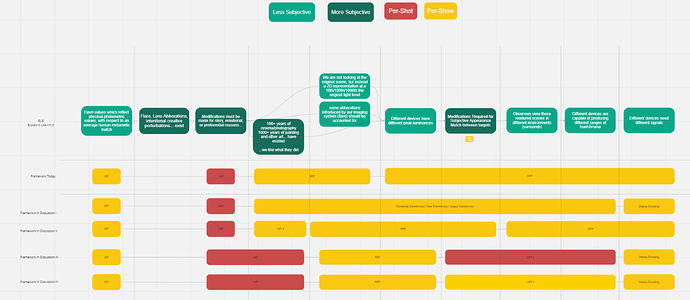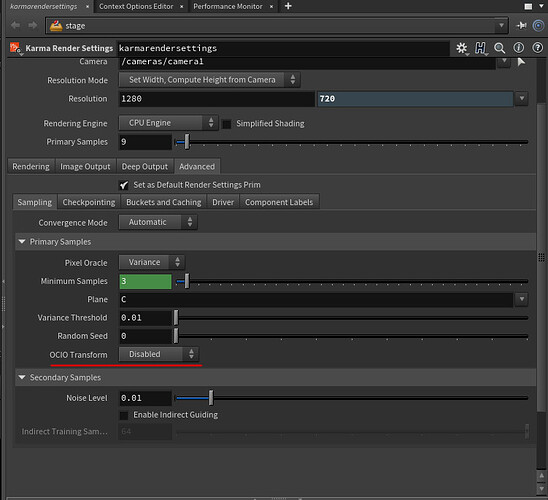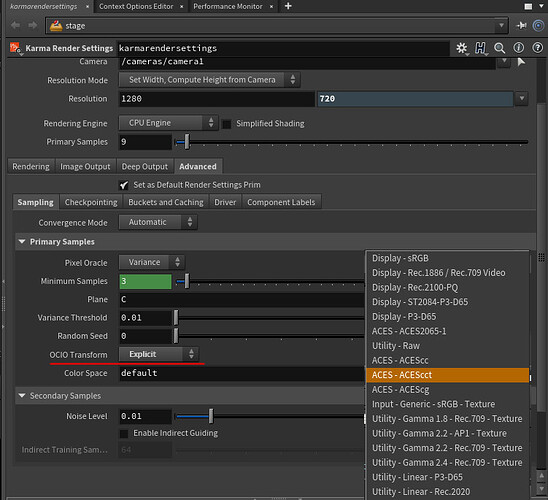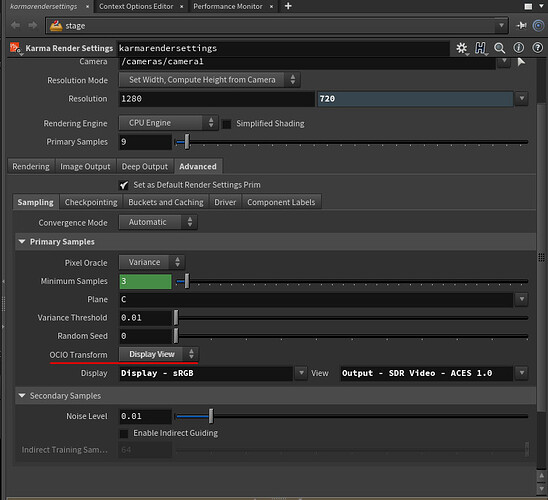Hi everyone, I cannot resist to answer. ![]() I think it is good to have a “safe” place to discuss these topics.
I think it is good to have a “safe” place to discuss these topics.
If I may, I would like to share a few ideas that have been on my mind for the past few years. I understand it might be too late to go back to the conceptual framework conversation but nonetheless I always think it is interesting to share ideas and opinions.
I went back to check on the Miro board to do a screenshot. Here it is :
The framework that has been on my mind for these past years is something between III and IV and I would like to share it from a CG/Animation perspective. Nowadays most of our workflows have two “states” :
- scene-referred
- display-referred
The CG industry has moved from “display-referred” to “scene-referred” workflows quite successfully and I guess everybody (myself included !) has seen it as progress. There is an interesting pdf from Naughty Dog about Uncharted 4 where two pictures are shared :
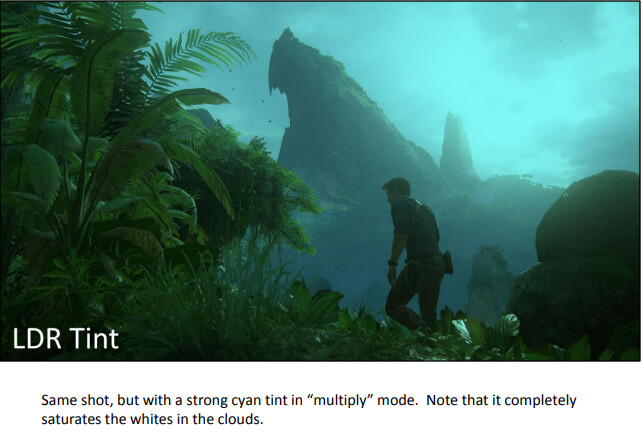
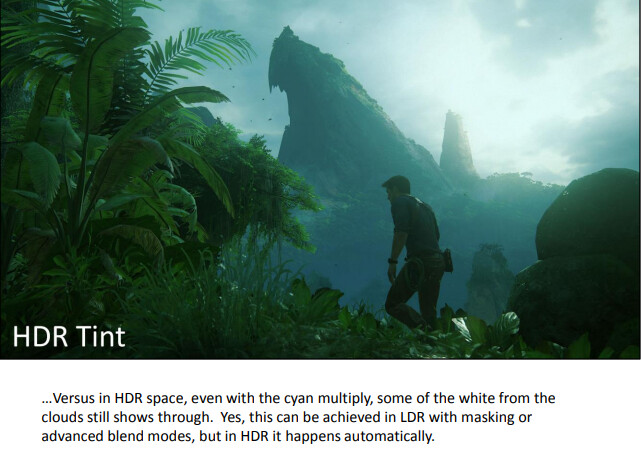
I could be wrong but I think the “HDR Tint” is presented here as superior when one could argue that these two images have different creative intentions and both approaches are valid. I am not saying that one “Tint” is better than the other but that we could think of a framework that allows both. It would have three “states” :
- scene-referred
- image-referred
- display-referred
I can think of several operations that would benefit from a such workflow : sampling and denoising. I recently discovered that a major render engine´s denoise process expects a [0, 1] range and I thought this “image-referred” state would be a good place for that.
Also, with adaptive sampling, since the convergence criteria (or threshold) is “perceptual”, I guess it would make sense to use an “image-referred” state to sample properly. Some render engines ship an arbitrary curve to sample (so completely unrelated to the actual CMW used) and some of them (such as Karma) have implemented OCIO in the sampling options.
The issue with that is that users would sample using an SDR Output Transform and then when the HDR grade comes in, noise would appear (especially in the highlights). Because HDR view transforms usually have much less compression in the upper range of the image data, we cannot hide sampling issues up there as much. This is the main feedback I got from a famous plumber CG movie…
I remember that denoising has been discussed in this thread with a different take on the issue. So I guess there are several possibilities out there.
Finally, there are several grading operations that I believe would fit perfectly in this “image-referred” state such as saturation or contrast. It always feel weird to me to use contrast on tristimulus data in the open domain.
Anyway, that is my tuppence…
No need to apologize. We are all learning here.
And finally… If I understand correctly "The main appeal for using a CAM should be the ability of changing the viewing conditions and have an image that appears roughly similar." but “We’re not even using the viewing conditions from the model (to change viewing conditions).” I thought that was worth pointing out based on the different comments about the CAM.
Regards,
Chris
